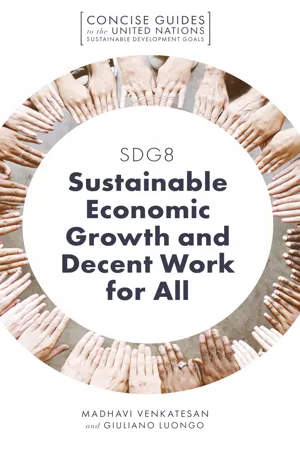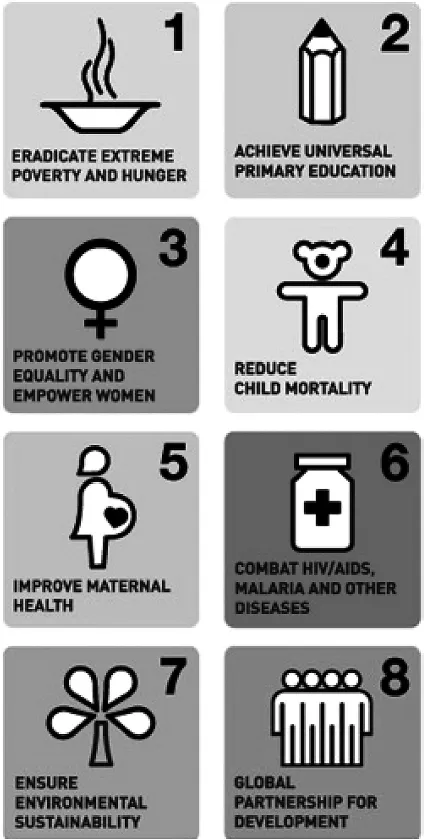INTRODUCTION
Human life is dependent on the natural environment for its own existence. Specifically, air, water and food are necessities that human life requires and cannot literally live without. However, the commoditisation of environmental life and the market attribution of price along with the characterisation of the environment as being a ‘resource’ has transformed the perceived value of it. As a result, the environment has ceased to be viewed as having implicit value. Indeed, it has been subject to being undervalued. With neoclassical economics dominating the global economic framework, supply and demand, along with assumptions related to scarcity and abundance, have often created information asymmetries that have led to overuse, exploitation, degradation and, ultimately, unsustainable environmental utilisation rates. This has been exacerbated by promotion and adoption of cultural norms that focus on individualism and support immediate gratification as well as inequality between trading partners.
Inherent in the contemporary and ubiquitous market-based economic system is a failure to assess the intertemporal and holistic costs of human activity on the environment. Environmental resource utilisation and assessment along with the life cycle impact resulting from the deployment of these same resources in production, use and waste are often limited to a finite and short-term time horizon. This perspective has prompted excess use and even extinction simply due to the lack of recognition of the interconnectivity within and across ecosystems (Daly, 1993) and has been compounded by the use of positive discount rates that do not adequately factor the time for resource regeneration (Anielski, 2002; Helliwell, 1975; Ludwig, Brock, & Carpenter, 2005). Further and related, given that the modern market system has its roots in the colonial and mercantilist periods, the exploitation of the environment is inclusive of peoples of conquered and claimed territories and therefore is related to the observable impoverishment and variations in accumulated wealth between developing and developed economies, respectively. The economic marginalisation of developing countries has significantly contributed to the mis-pricing of environmental resources, as impoverished conditions coupled with more recent climate change weather-related events have prompted use of market mechanisms and the associated informational asymmetries for these countries’ survival. The result has been evidenced in the historically documented commoditisation of natural resources, fragility of export-dependent growth observed in developing countries, and the corresponding dependence on developed country demand. Ultimately, there is a vicious cycle of impoverishment for the developing country that is based on its impoverished starting condition (Acemoğlu & Robinson, 2017; Alam, 1994). Though often times trade is noted as a catalyst for wage growth and economic development, the oversupply of unskilled and semi-skilled labour and the limited ability for these classifications of labour to organise have both significantly contributed to the elimination of trade-based market power and maintenance of domestic poverty. The research on gains from trade to workers is at best ambiguous but does note that the population size of workers along with the skill distribution may lead to greater income inequality within a country (Kiyota, 2012; Stewart & Berry, 2000; Winters, 2000). Without regulatory intervention, these classes of workers remain exploited both directly in the form of wages and indirectly in the form of working conditions; the latter has compounding impacts related to environmental degradation (Guasch & Hahn, 1999; Miller, 2003). Additionally, reliance on gross domestic product (GDP) as a measure for economic growth masks the reality of persistent wage disparity as GDP may increase but not yield a proportionate increase in income, especially at the lowest levels (Fosu, 2017; Harvie, Slater, Philp, & Wheatley, 2009).
Population growth, pollution pressures and perceived resource limitations have provided a catalyst for national policies and actions, albeit primarily in the developed world, to protect local environments while recognition of the common challenge of climate change, which is arguably tied to the commoditisation of the environment, has prompted the foundation for cooperation. The foundation for a global policy was first identified in a 1987 United Nations World Commission on Environment and Development commissioned report referred to as the Brundtland Report (‘Our Common Future’):
[…] environmental stresses and patterns of economic development are linked one to another. Thus, agricultural policies may lie at the root of land, water, and forest degradation. Energy policies are associated with the global greenhouse effect, with acidification, and with deforestation for fuelwood in many developing nations. These stresses all threaten economic development. Thus, economics and ecology must be completely integrated in decision making and lawmaking processes not just to protect the environment, but also to protect and promote development. Economy is not just about the production of wealth, and ecology is not just about the protection of nature; they are both equally relevant for improving the lot of humankind.
In 1988, the United Nations Environment Programme and the World Meteorological Organisation established the Intergovernmental Panel on Climate Change (IPCC) to assess available scientific data and the possible broader impacts of climate change, and to propose a global response. From this point to the present, a framework of global action to address environmental and human threats were formally established. The Kyoto Protocol and its successor, the Paris Agreement, along with the millennium development goals (MDGs) followed by the sustainable development goals (SDGs) are an outcome of the recognition of the significance of unified global action.
Unfortunately, there remain issues in addressing sustainable development that reveal the disparate conditions between developed and underdeveloped countries and are also indicative of the basis for the development variation. Developed countries in general have benefited from being colonisers, dominating environments and promoting market valuation of environmental resources based solely on the human and capital cost of extraction. They have gained over historical time from exploitation of the underdeveloped world and by so doing contributed to the continued marginal state of these nations. As a result, though there is a universality in the application of the SDGs and their predecessor, the MDGs, the impact of poverty and environmental degradation is higher for underdeveloped countries as a result of developed countries. The relationship between developing country environmental and social issues and developed economies is reflected in the phrase that has been employed within the Paris Agreement, ‘common but differentiated responsibilities’ (CBDR). The acknowledgement of CBDR arguably is also the justification for the role that developed countries were assigned with respect to the MDGs and also expected to play in the implementation of the SDGs.
MILLENNIUM DEVELOPMENT GOALS
In September 2000, the leaders of 189 countries gathered at the United Nations headquarters and signed the historic Millennium Declaration, in which they committed to achieving a set of eight measurable goals, the MDGs, by the target date of 2015. Though the MDGs were not enforceable their creation and adoption were a significant milestone of global cooperation and recognition of common issues and concerns.
As noted by McArthur (2013), the MDGs were ‘the first global framework anchored in an explicit partnership between developed and developing countries’.
Before the MDGs were crafted, there was no common framework for promoting global development. After the Cold War ended, many rich countries cut their foreign aid budgets and turned their focus inward, on domestic priorities.
Fig. 1. Millennium Development Goals. Source: United Nations (n.d.-b).
Table 1. Millennium Development Goals.
1. Eradicate extreme poverty and hunger. |
2. Achieve universal primary education. |
3. Promote gender equality and empower women. |
4. Reduce child mortality. |
5. Improve maternal health. |
6. Combat HIV/AIDS, malaria and other diseases. |
7. Ensure environmental sustainability. |
8. Develop a global partnership for development. |
Source: United Nations Development Programme (UNDP, 2015).
Through the 1990s – as a result of limited foreign aid, along with natural and domestic issues on the part of developing countries – poverty along with malnutrition and accompanying human capital depleting circumstances became increasingly evident (McArthur, 2013).
As a result, around the turn of the millennium
world leaders took an unprecedented interest in global poverty. They agreed the Millennium Declaration in 2000 and the Goals a year later. The MDGs sought to halve extreme poverty and hunger by 2015; achieve human development goals – education for all, gender equality, reduced child and maternal mortality, improved health – ensure environmental stability; and, last but not least, MDG 8 – forge a ‘global partnership’ for development. (Hulme, 2010)
The eight goals were established with a transparent measurement/monitoring mechanism. Additionally, the goals were set with a final reporting and termination date in 2015, which was the prompt for the development and deployment of the SDGs. The Rio+20 conference (the United Nations Conference on Sustainable Development) in Rio de Janeiro, June 2012, established a process to develop new goals and continue the established global cooperation beyond 2015.
The MDGs were globally applicable, promoted collective action and formally established the recognition for needed international cooperation. Specific to the latter, embedded within the goals was a recognition of the interconnectivity between the welfare of people and nations. Poverty thematically interconnected the goals and surfaced the significance of poverty alleviation and eradication as being central to their attainment. As described by Summer (2007),
It is virtually undisputed that poverty is multi-dimensional and … that the dimensions of poverty cover gender equality, education, health, shelter, water, sanitation, risk, vulnerability, participation, ‘voice’, and other social ‘rights’.
However, noted variations in ‘state capacity, fragility, initial conditions and subsequent growth, policy and institutions’ (United Nations, 2003) presented a challenge to developing countries in addressing domestic poverty. For this reason, the MDGs made explicit the role of rich countries in the persistence of poverty in poor countries (United Nations, 2003).
During the MDGs implementation process, monitoring and evaluation of their progress across countries persisted with routine commentary in academic and trade publications. C...

